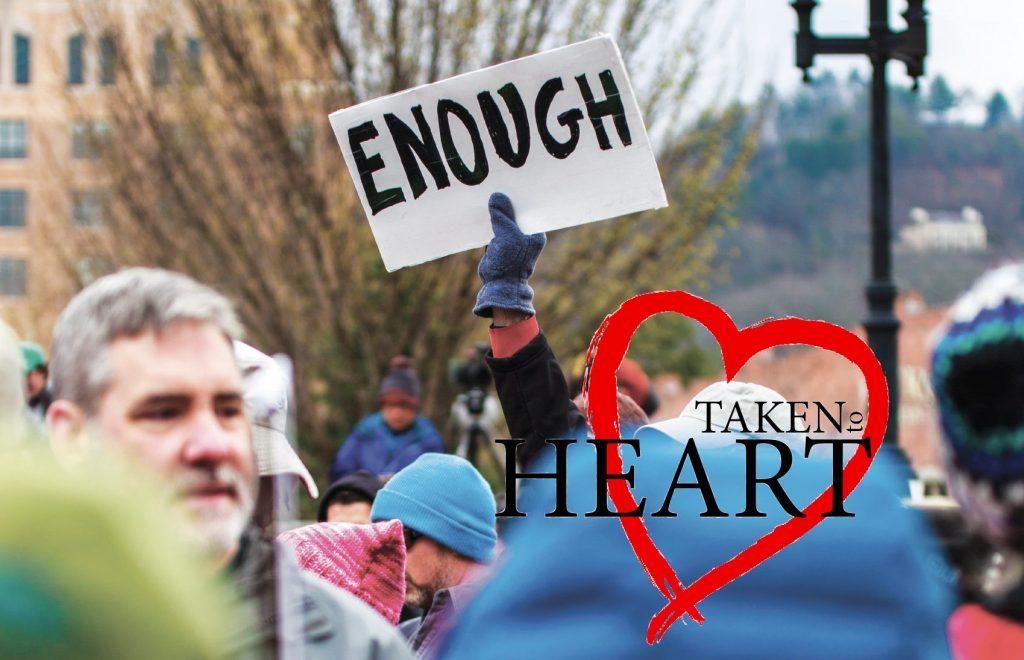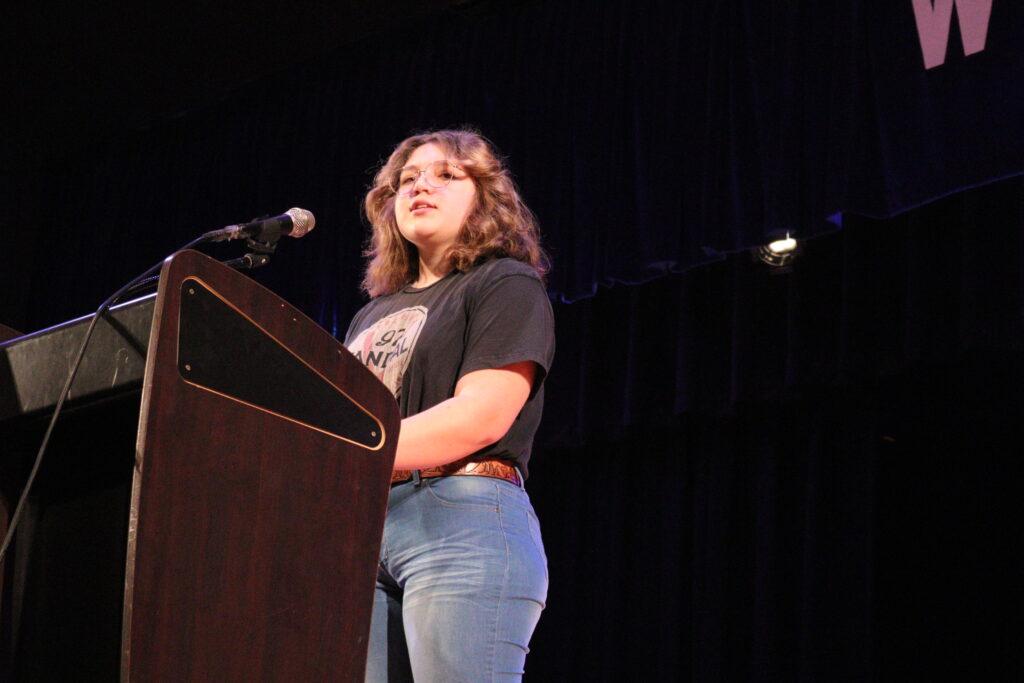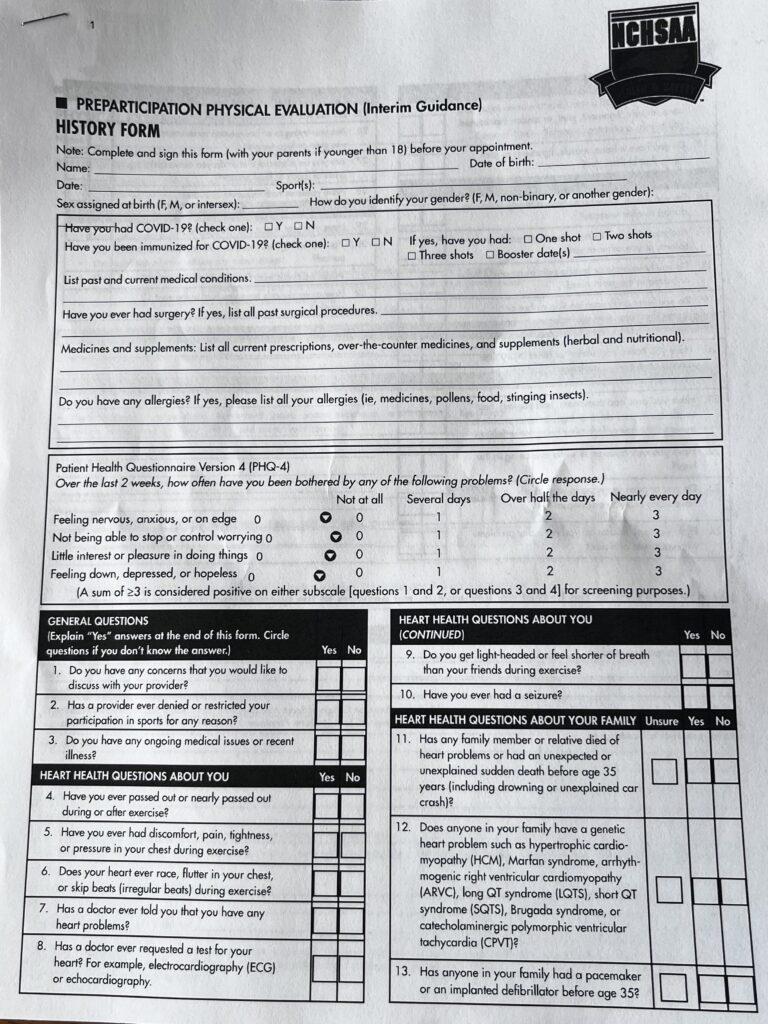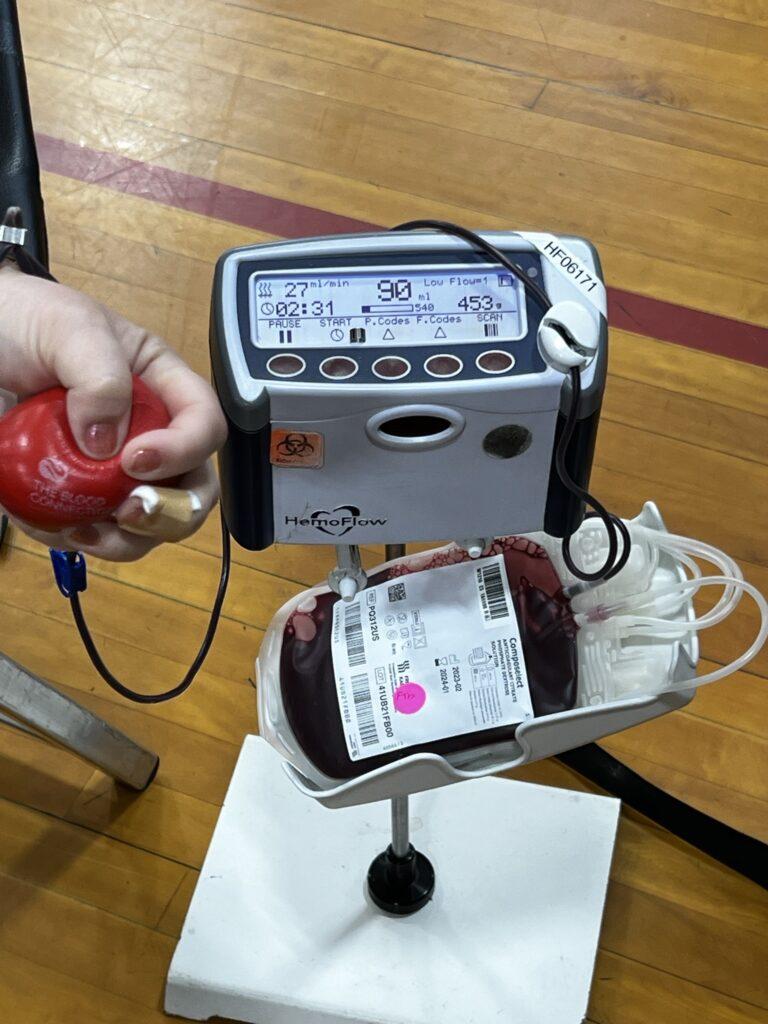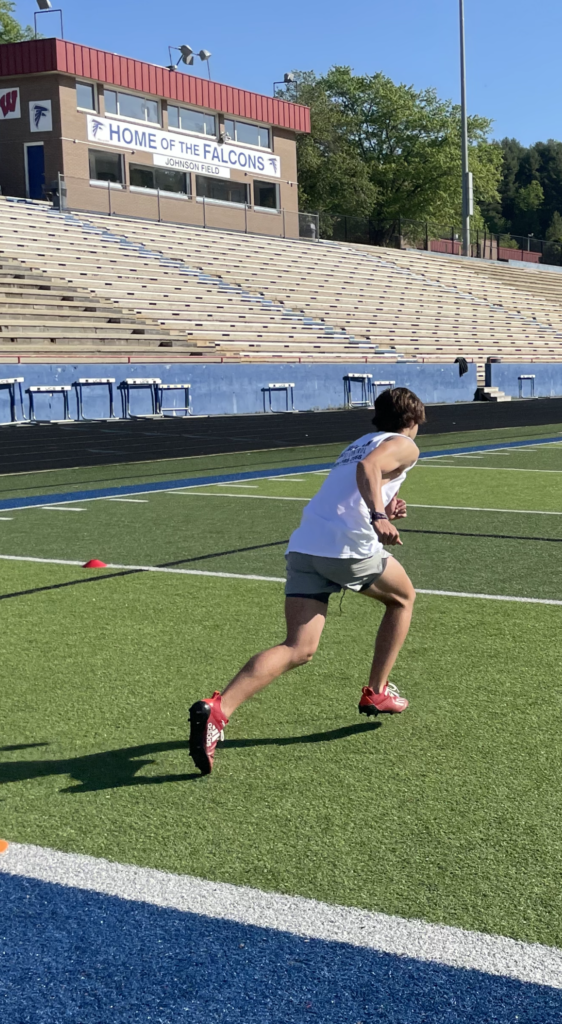Feb. 14. Valentine’s Day. A day devoted to love and affection. It’s hard to imagine any sort of malicious act taking place. In 2018, however, no one needed to imagine: the aftermath was broadcast to the world.
Before the afternoon bell, students at West began receiving news and social media notifications announcing a school shooting occurring more than 700 miles away in Parkland, Florida. In the wake of the tragedy, a year later, this day takes on a new meaning: one of remembrance.
As waves of students began walking out of classes across the country to demand action, Henderson County leaders began looking for ways to make sure a similar tragedy wouldn’t happen here.
Last Valentine’s Day, former Marjory Stoneman Douglas High School student, Nikolas Cruz, 19, became an active shooter in the halls shared by old classmates and teachers. The incident sparked an immediate reaction not only from the Parkland community, but from law enforcement and school officials across the country, including those here in Henderson County.
Actions have included the creation of the Henderson County School Safety Committee formed the day after Parkland, the new position of Director of Capital Projects in School Safety, changes to safety procedures implemented in all schools, new security measures and an intensified focus on mental health and the struggles of students – both mental and emotional – that cause issues from bullying to active shooter scenarios.
A year later, safety remains a focal point with committee meetings occurring regularly at the county and school levels, the creation of a growing safety budget and regularly scheduled drill practices. These efforts have remained consistent in their momentum, resulting in a Henderson County Public School system much different from the one from a year ago.
“Parkland kicked off a lot of things because school safety has really been overlooked and neglected for a long time,” Daniel Holbert, West safety committee chairman, said. “A lot of the problems were not fully understood or being stressed and were not being taken seriously, so part of the reaction to Parkland was school safety teams, county safety teams and figuring out how those entities work together.”
School faculty have not been the only ones striving to make schools safer. Students and teachers at West have founded the Student Culture Club and plan to start the Student Safety Club, which aim to make West not only more physically safe, but also safer from bullying and discrimination. Students have also frequently used the “Report It, Don’t Ignore It” app released by HCPS to report suspicious activity to school administrators.
West’s Sheepdog Club has also played an active role in making the school a safer environment by seeking ways to curb bullying at the school.
“I think there’s a lot more talk about this subject at school now. We practice safety scenarios more in the hallways when we are changing classes, not just sitting in a classroom,” West Sheepdog Club member Casey Brown said. “I feel like we are a lot more prepared now if that situation would ever occur here, and I think we have a good support system set up around us if it ever did happen.”
Facilities
Plans regarding school safety in Henderson County have not come solely from the senior staff members. Immediately after the Parkland shooting, Superintendent Bo Caldwell formed the Henderson County School Safety Committee to spearhead the effort to make schools safer. The committee consists of individuals from different backgrounds such as District Attorney Greg Newman, members of local law enforcement agencies, mental health providers, emergency services workers, juvenile justice workers, teachers, parents and other school officials.
“All of these folks are getting together with school system officials and leadership so that we can make sure that our effort is not only working in coordination, but that we recognize that we are going to be able to brainstorm better together than we would independent of each other,” Dr. John Bryant, associate superintendent for Henderson County Public Schools, said. “We all really see it through a different lens. Having that open conversation channels us into making good decisions.”
In order to manage this initiative, the school system created the position of director of capital projects in school safety. Former principal Kent Parent was hired for this job.
“My position is a brand new one. Dr. Bryant and Mr. Caldwell requested from the board to create this position to not only handle the new construction of Edneyville Elementary School and Hendersonville High School, but also to do the safety because the new systems needed to be installed,” Parent said. “All systems, like intercoms and fire systems and emergency systems, have to be contained inside a building and now it falls under the capital projects because we are introducing new systems to buildings.”
Prior to Parkland, the projects required to carry out the safety initiative were largely unable to happen at a large scale because of the lack of a school safety line item in the county budget. This line item, previously nonexistent, was roughly $625,000 for this year which enabled much of this progress.
“Everything comes with a price tag,” Parent said. “The awareness has increased in our schools, our community and to our civic leaders, county commissioners, governors, state legislators and the evidence of that is by their continued financial support to be able to put our schools into a safer posture. Without that support and momentum, we would just be talking about what we should be doing.”
The budget for the upcoming year has an additional $500,000 requested to be designated toward physical safety enhancements in both the school facilities countywide and the buses. The funds this year were primarily allocated toward renovations in 10 different schools to create single point entries and the installation of more than 50 electronic locks on doors throughout the county. These locks cost roughly $4,800 each.
The physical changes installed and implemented are some of the actions most immediately noticed by students and parents.
“When I became principal, I wanted to make sure that safety was a priority,” Principal Shannon Auten said. “I added over 60 cameras on campus and we’ve also locked the senior gate to make sure that we only have one entrance. That way we can see who’s coming and going. We’re locking all the doors to the classrooms, practicing multiple and varied drills, and educating teachers on mental health.”
The first of those changes might have come to the attention of students the moment they had to knock on their classroom door for the first time to gain entrance. The decision to keep doors closed and locked was a mandate from Caldwell following the Parkland shooting with the intent to make schools safer on the inside against the threat of any intruders.
This measure, coupled with the mandate for all staff to wear identification, has been a simple method that county leaders believe could prevent considerable damage in the scenario of any intruder or active shooter situation though it comes at the cost of being, in the opinion of many students and teachers, inconvenient.
“I don’t think locking all the doors is helping because if someone really wanted to get into the classrooms, then they would just get in another way,” junior Jaylan Brinson said. “Also, if someone were to get in the first exit, there’s not another exit in a lot of classrooms so there would be no way to get out.”
The locking of doors and installation of new locking mechanisms continues to be a priority though when it comes to security. Officials believe it is a simple but significant step toward keeping unwanted guests out of schools and classrooms.
West is among the schools where necessary renovations have been identified. The installation of single-point entries will start this weekend in the front office. The entry will enable more security as visitors will need more clearance to get into the school.
“We’ve had several architects and engineers out here to try to figure out the best plan for West with the little funding we have to work with,” Auten said. “There have been several different plans. They’ve got several ideas for closing the courtyard and other areas where there are entrances to the building. We also want a buzz-in system at the front entrance.”
The constant presence of a school resource officer in the schools across Henderson County was also a large part of the plan assembled in February of last year. Henderson County Sheriff Lowell Griffin said that currently, the Henderson County Sheriff’s Office is within a few officers of having an officer in all 23 schools in the county.
“I would like to challenge anybody to go anywhere and try to find better quality officers than the vast majority we have in our schools right now,” Griffin said. “I feel really good about where we are.”
Despite the many changes that have occurred since Parkland, Griffin said that the actual procedures regarding how officers respond to threats has remained unchanged.
“The only thing that we want to make sure of is that when we have a threat, we pick up an indicator. We want to follow up on that. The actual concepts that are in place are the same concepts that have been designed and have been around for quite some time now because, if employed correctly, they work,” Griffin said. “As far as the actual concept in the applications of the type of responses that we use inside the schools, nothing there has really changed.”
Apart from the security aspect provided by SROs, there are benefits to having the regular, familiar presence and constant interaction with the students, according to Griffin.
“I definitely think that the presence of an SRO at our school has given students the opportunity to form relationships with the officers, which helps them feel more safe,” Brown said. “They also feel more comfortable if they see something suspicious and they can go to them and warn them or talk to them about anything they think is going on at school.”
Griffin said he has worked hard to arrange the implementation of 23 officers in the schools. According to Griffin, the extra time and training required for an SRO are needed to ensure the best possible officers are placed in the schools.
“The recruitment and selection of these officers has been difficult,” Griffin said. “One of the biggest issues with Parkland was, evidently, when they were selecting officers to go into the schools, they selected an officer that wasn’t capable of actually performing his duties. So there must be an awareness as we choose officers to go into schools. We need to choose an officer that is willing and capable to get in there and employ these concepts that we train on, these methods and techniques, because if they’re not going to employ those, if they’re going to stand back and let a tragedy unfold, then those are simply not the people we need in the schools at all.”
Mental Health
In the aftermath of the Parkland shooting, the survivors primarily spoke out about two pressing issues: gun control and mental health. Many who knew Cruz suspected he suffered from several mental illnesses that were not properly addressed. This was a factor that led to the death of 17 people.
Despite the illnesses that led Cruz to commit the shooting, survivors are quick to point out that they should not be used as an excuse. When NRA representative Dana Loesch described Cruz as “crazy,” she was met with a room’s worth of disapproving ridicule, headed by shouts of, “Don’t say ‘crazy.’”
This outcry against the stigmatization of mental illness has caught the eye of many, especially school systems. Matthew Gruebmeyer, director of student services for Henderson County Public Schools, said the tragedy in Parkland made a big impact on the school system’s approach to mental illness.
“I think that our county government and school system and citizens took Parkland really seriously and wanted to do everything that they could so that kind of thing could never happen in Henderson County,” Gruebmeyer said. “They looked at our schools, for example, and said, ‘What is it that the schools need to be safer, and how do we give it to them?’ I think that what the folks thought is that we need two things. We need social workers, which we never had before, and we need more school-based mental health aid.”
To increase the effectiveness of their efforts, Gruebmeyer and his team in student services cooperated with Safe Havens International (SHI), a non-profit organization that focuses on improving the safety of school systems. SHI conducted a survey of all the schools in the system and made a set of recommendations based on their findings. According to Gruebmeyer, many of these recommendations have already been implemented.
As part of completing these recommendations, Gruebmeyer decided to focus on two major initiatives: Trauma Sensitive Schools (TSS) and mental health first aid training. TSS is a new type of teaching style that is designed to help teachers better teach to those with mental health issues based on their backgrounds. This is accomplished by teachers forming good relationships with their students, responding to their individual needs as best as possible and developing routines in the classroom that make their children feel comfortable. This training, intended to be given to all teachers, would not only help students with mental health issues feel more comfortable, but it would also help them learn better in their classes.
Mental health first aid, which has been implemented through teacher training in Henderson County Public Schools for several years, focuses on giving children with mental health issues immediate care for minor emergencies.
“It’s just like first aid training with medical emergencies,” Gruebmeyer said. “When children have mental health challenges, teachers are in a position to provide first aid before those kids get more professional help. For that student who shows up at West High feeling anxious, if she can talk to her first period teacher about her anxiousness, that would not be an emergency. It’s not like we have to send that kid down to the office every time, but the teacher should be prepared to help that kid so the child can stay in class. That’s what mental health first aid does. It teaches the teacher how to recognize and successfully help kids with a wide variety of mental health challenges.”
Despite the efforts of school systems to help those with mental health issues, they are still held back from improving because of social stigmas associated with mental illness. According to a meta analysis by Patrick Corrigan and Amy Watson at the University of Chicago’s Center for Psychiatric Rehabilitation and Chicago Consortium for Stigma Research, there are many misconceptions about mental illness that have become common. The one most relevant and damaging is that of fear and exclusion. Since many shooters have had histories of mental illness, many believe that those suffering from mental health issues are dangerous, and should be kept out of most communities.
The effort against stigmatization of mental illness has been spearheaded by celebrities. Katrina Gay of the National Alliance on Mental Illness praised the movement, as celebrities speaking out “inspire us in our own struggles.” Their position in the public eye and large fan bases allow them to spread the message quickly and effectively. Stars from Ryan Reynolds to Ellen Degeneres have spoken out about their mental health issues in an effort to normalize them.
Kevin Love of the Cleveland Cavaliers was motivated to speak out about his anxiety by the Parkland Shooting specifically, and vowed to make it part of his image from then on.
“This can be phased into everything I do from here on out,” Love said. “I think the reach and the social platform we have as athletes now can be used in such a great way. Even thinking about LeBron (James), who created the I Promise School in Akron; he’s essentially the first athlete to do that sort of thing. It set the train in motion for so many different guys around the NBA and different sports to create these academies and schools and potential classes at different universities and high schools and maybe even before that. That’s a beautiful thing.”
Training
On the day of the Parkland shooting, Marjory Stoneman Douglas High School had an active shooter drill planned in the coming weeks. The students were no strangers to these drills, and the school had many precautions in place to prevent a shooting. All entrances to the school were locked that day until shortly before dismissal time, and police say that is when Cruz pulled the fire alarm and started shooting.
The safety committee at West has worked to train teachers specifically for unexpected, unprecedented scenarios like the Parkland shooting.
“We go over issues of safety and mental health in every faculty meeting that we have, as well as our planning period meetings,” Auten said. “Different teachers have taken up different jobs (in the safety committee) and they’ve done a phenomenal job with that. They understand that it is part of their job description to keep students safe, but it’s tough to be told, ‘Hey, we need to have bathroom duty during class changes and planning periods.’ It really is tough, but it’s just a necessity to keep kids safe. We have to have supervision everywhere.”
As well as efforts made by the school committee, Caldwell issued mandates to further safety throughout Henderson County. These included the requirement of teachers wearing identification badges at all times, doors staying locked during classes and a minimum of three code red lockdown drills per year.
Even though school officials and emergency services workers know that these drills are a necessity, they have come with a cost. In recent weeks, parents and students across the country have spoken out against the physical and emotional stress that they have endured as a result of these lockdown drills.
“As emergency responders, it is important to have realistic training, but we also want to not make it traumatic to children,” Jimmy Brissie, Henderson County emergency services director, said. “Clearly, we need to have it somewhat realistic, so we do that when those opportunities present themselves. The more realistic training or scenario-based training might be done apart from the school when the students are in session. The firefighters, the EMS workers and the law enforcement officers can get the realism they need. I think there’s some concern there with parents, and I understand that. That’s why we’re looking at doing something during the summer when school is not in session with a full-scale effect exercise.”
In addition to holding frequent meetings, some members of the West safety committee are working on individual classroom plans. Holbert is holding frequent lockdown drills in his class, and intends to implement his system throughout the school.
“In my classes, we have already gone over a code red lockdown in every class at least three times. It’s conditioning to practice. You can’t show kids one time what to do and magically hope they go to the right spot efficiently and quietly. I am working on a checklist and trying to establish a protocol that these are expected things that you will go over the first week and go over in two weeks, then in another two weeks to where we condition (students) to know the hard corner in every room and maybe even paint hard corners. It needs to be across the board.”
Other teachers, like science teacher Amy Zalevskiy, review the lockdown procedures once early in the semester, but go into detail to ensure the students understand where to go.
“We do have to talk about (school safety in class),” science teacher Amy Zalevskiy said. “I had to start putting that into one of my first few days, a discussion on what we need to do in case something were to happen. And that’s good because in a pressure situation, if we know what to do. We don’t have to look to someone else. It’s hopefully going to save us valuable minutes to get someplace safe.”
Though the safety committee at West continues to work on improving safety measures, realtor and West parent Thia Kilpatrick said she feels enough has been done already.
“The school shootings that I have witnessed as far as exposure on the news do not make me feel concerned with sending my kids to Henderson County Public Schools because I know how seriously they take our school safety,” Kilpatrick said. “I feel confident in the folks that are there supervising my kids. Not that I think that there is not the potential for somebody to do something similar here, I think it’s just a little bit of a different climate. I do think there is bullying here, and I do think there is violent stuff that goes on in the school, but I really feel like there is a sense of community that Henderson County Public Schools is trying to foster with not only the faculty and staff, but also the students. I think that goes a long way.”
Many students agree with Kilpatrick. The shooting at Marjory Stoneman Douglas initially scared senior Grace Neve, but after a few weeks, she felt safe coming to school.
“I was definitely a little nervous after the (Parkland) shooting because we’ve had multiple threats, but I think everybody was on edge,” Neve said. “I wasn’t too worried. There was always something in the back of my head that worried me a little bit, but it didn’t affect my classes. I made sure to not make it something that would overpower my thoughts, or keep me from doing my work.”
Despite many students and parents feeling safe, Holbert plans to form a club where students can learn more about preparation for worst-case scenario shootings.
“I am working on a safety club here at West where I want to teach CPR, first aid and trauma to empower (students) in life,” Holbert said. “(I also want to get) a (first aid) kit in every classroom. If you go to my classroom right now, I have six medical kits with hemostatic dressing, agents, pressure bandages, you name it. I am set up right now for multiple casualties in one room.”
Future
The events of Feb. 14, 2018, cannot be undone. For many, the details that unfolded that day constantly haunt them.
“The anniversary for me is really meaningless because every day for me is Feb. 14,” Andrew Pollack, father of shooting victim Meadow Pollack, 18, said. “I feel the same way every day about losing my daughter.”
However, schools across the country can benefit from lessons learned during this tragedy. At West and throughout the county, school safety procedures are more rigorous than ever before, and mental health awareness is gaining traction.
“I can definitely tell that there’s more of a presence of safety throughout the hallways and the school,” junior Riley Hill said. “I don’t think it’s just law enforcement. Teachers, students and people in the community have all hopped on the bandwagon in Henderson County.”
By: Bartel Van Oostendorp, Print Editor-in-Chief; Nathan Turpin, News Editor; Elise Trexler, Web Editor-in-Chief

